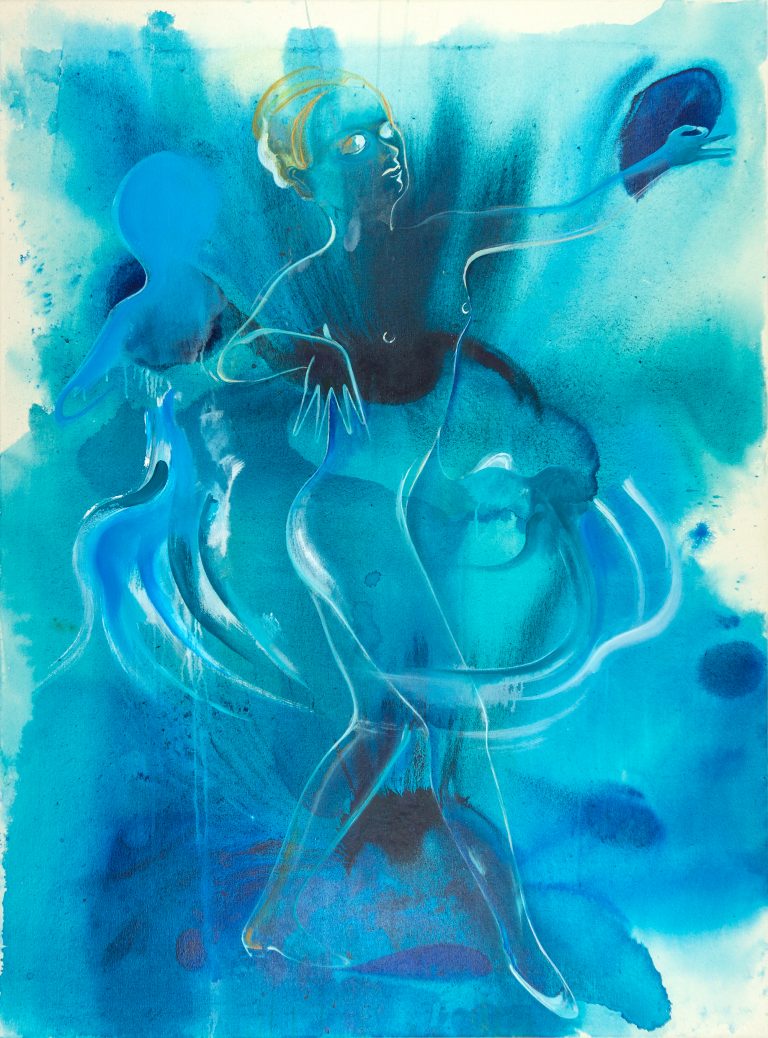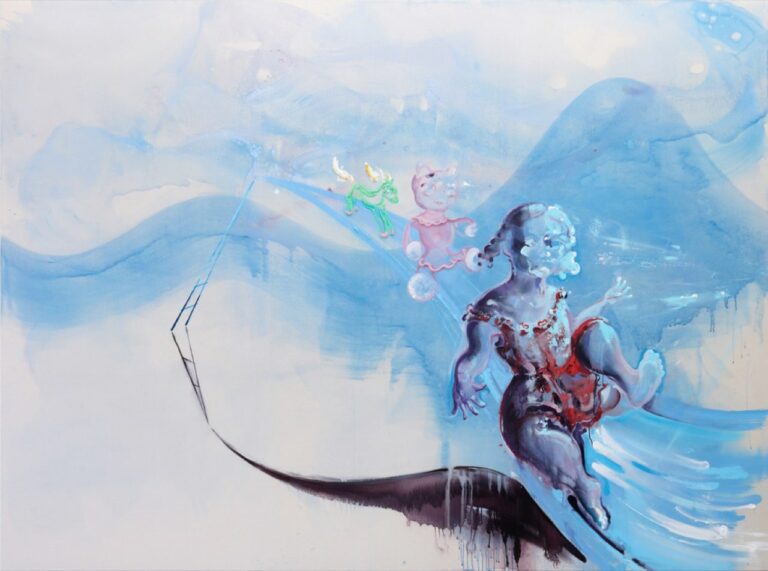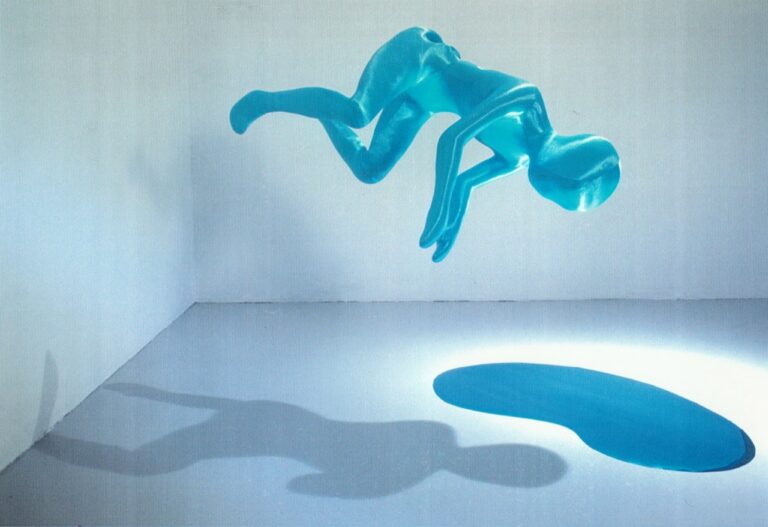Bettina Sellmann’s paintings Snow White and The Clearing
Snow White with her “skin as white as snow, lips as red as blood and hair black as the wood on the window frame,” presents women with a typography of beauty defined by contemplation and purity. The narrative of this tale revolves around a conflict in the mirror between the Step Mother who asks “who is the fairest of them all?” and the daughter whose innocence and chastity is determined by both her lack of self-reflection and the Queen’s self-absorption and desire. A contest in other words, between woman and women, self and self, but only the voice in the mirror, the authorizing voice of patriarchy, ascertains the parameters of women’s obsessive self-appraisal by answering the question. Rather than repeating this affirmation of the ideal female, Bettina Sellmann focuses on Snow White’s idyllic revelry. This dream like state of suspended animation endured by Snow White , Sleeping Beauty and other fairy tale princesses before they are transformed becomes in Sellmann’s painting an evocative swirl of saturated color and meditative calm. Like Sellmann’s The Clearing, similarly enveloped in a visionary purple haze, Snow White’s enchanted form is surrounded by the natural world and her sleep is imagined not as a place of waiting for unfulfilled desire but rather as a blissful alternative state of exposition and creativity.






















